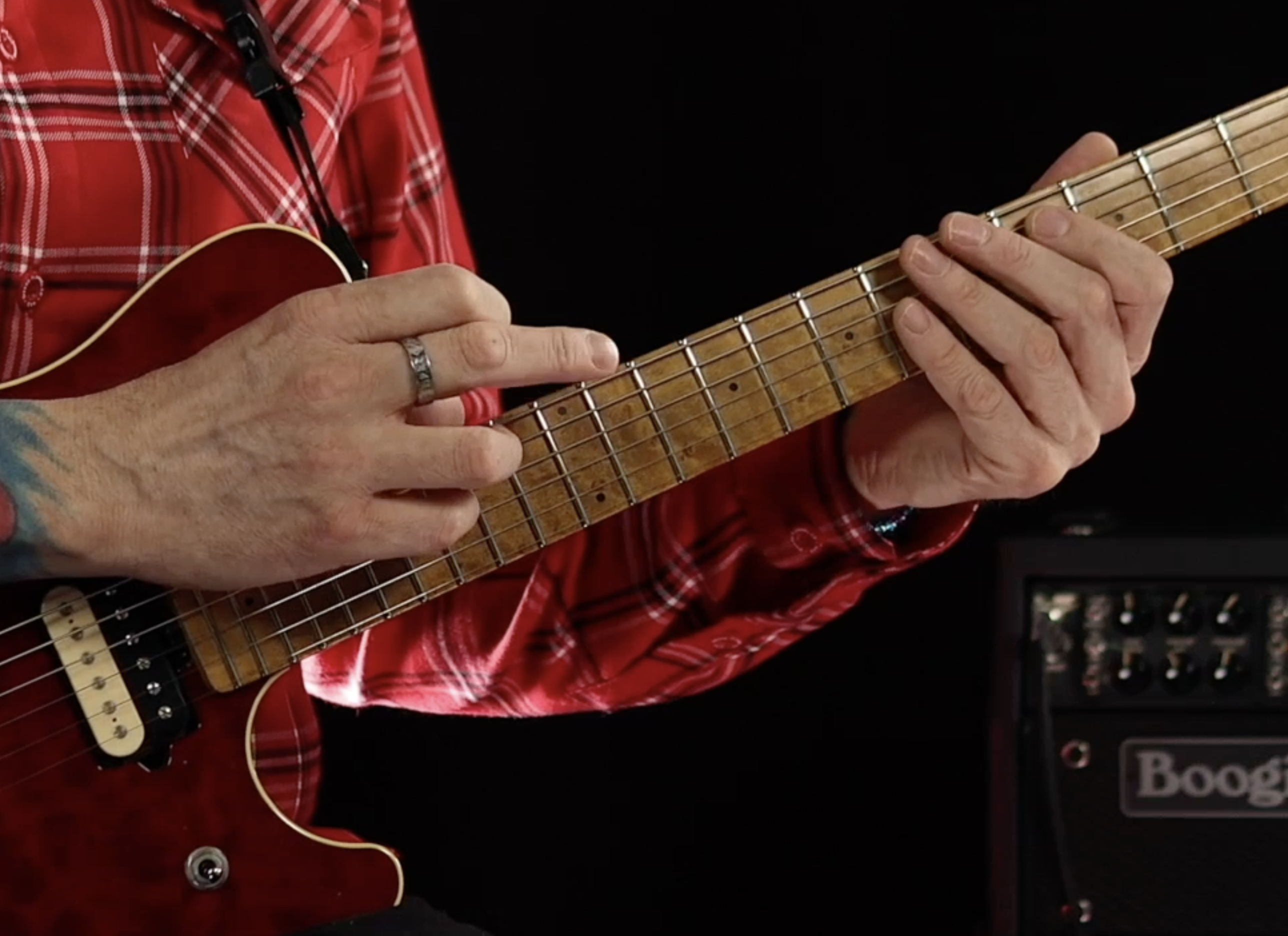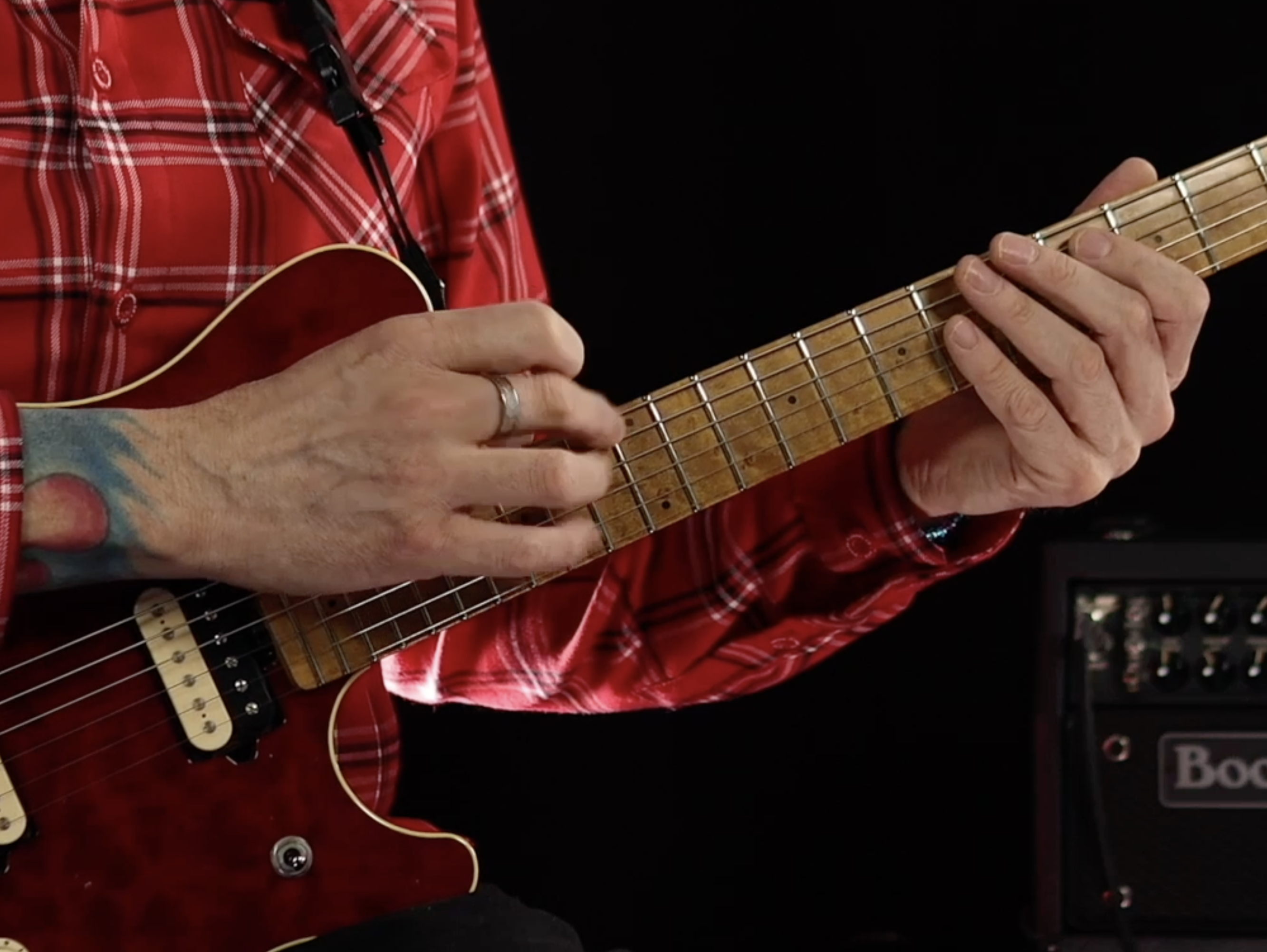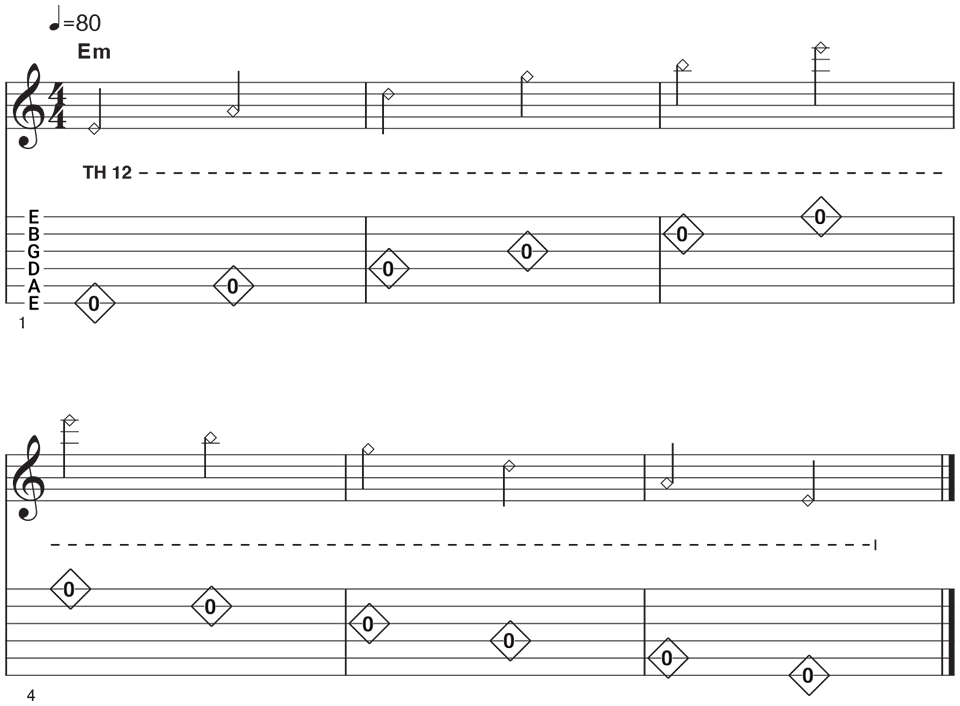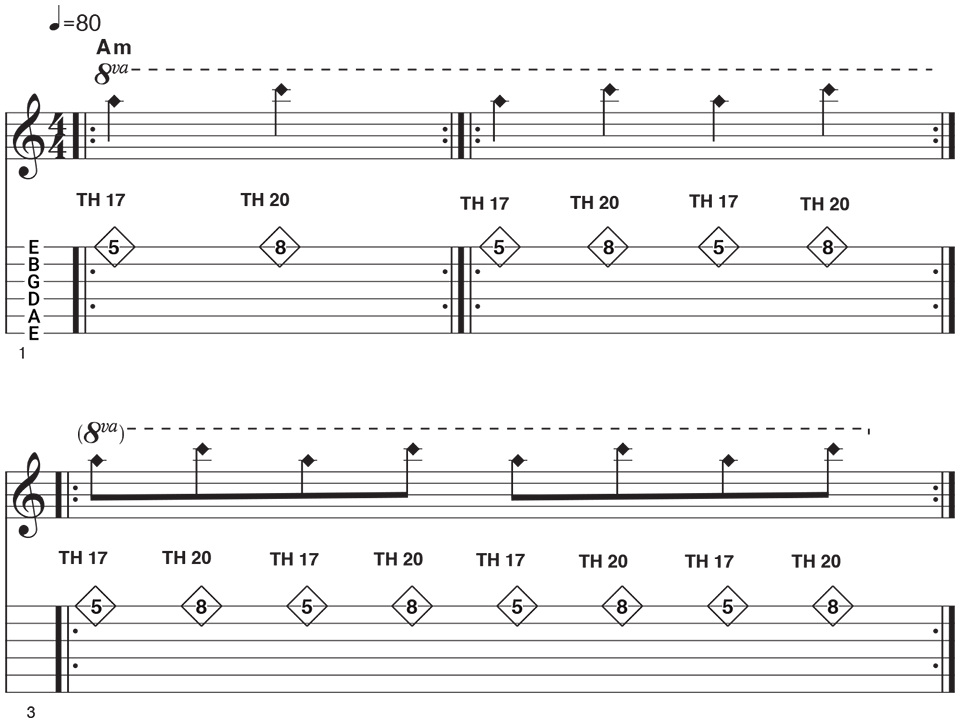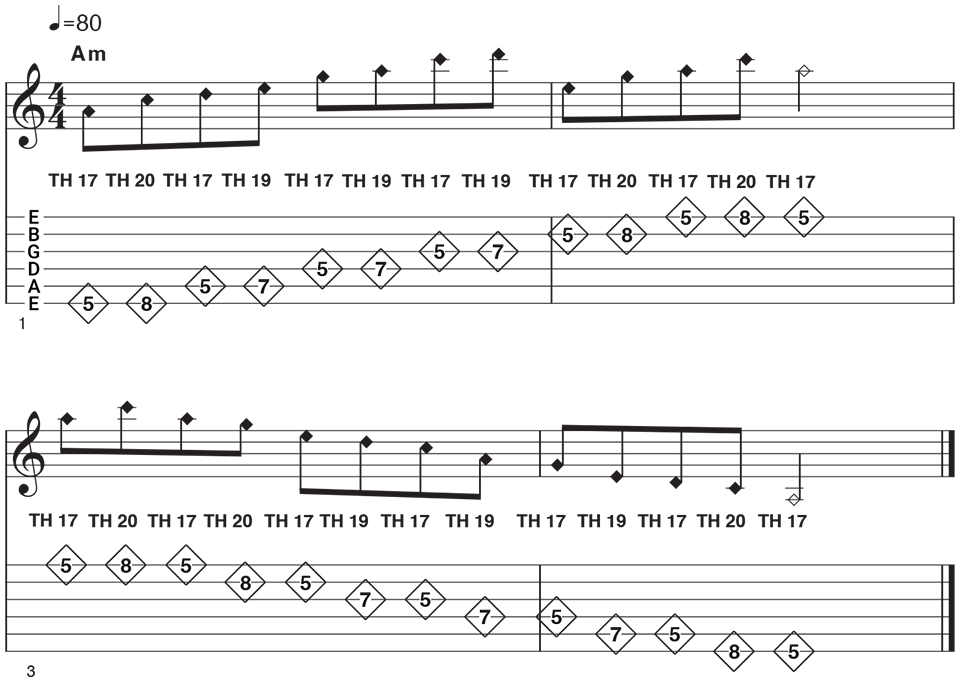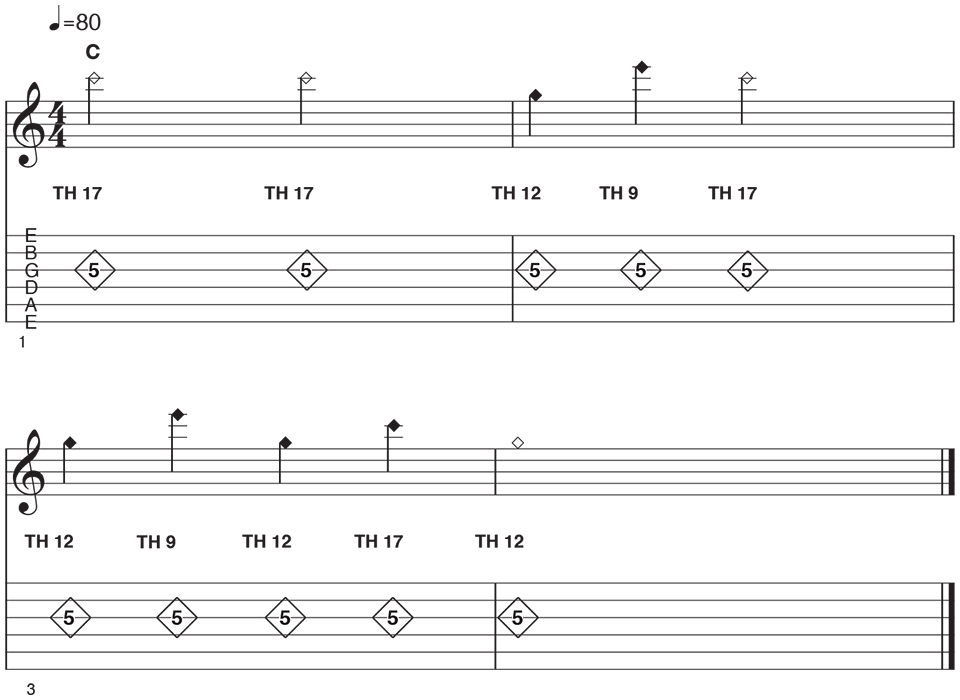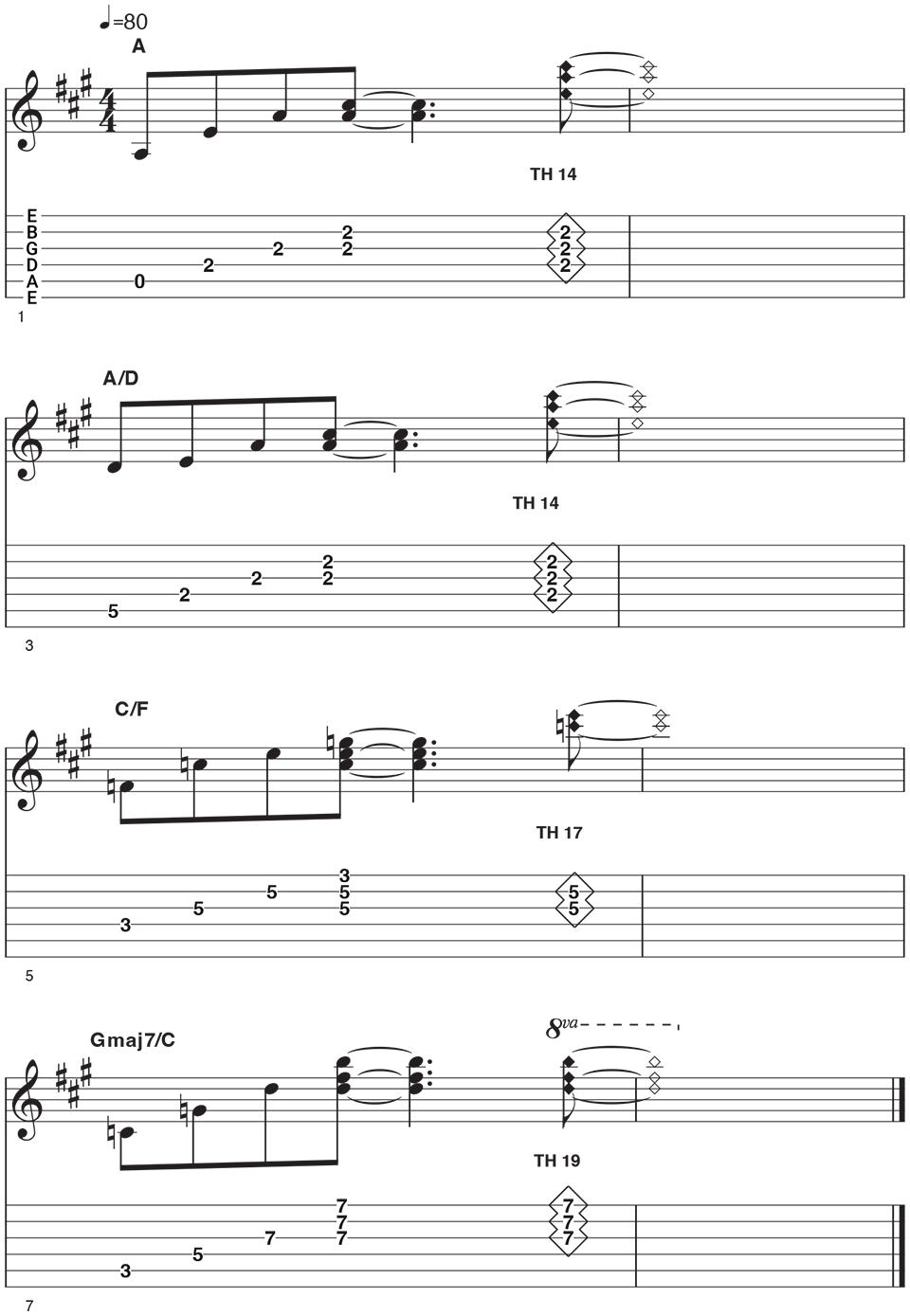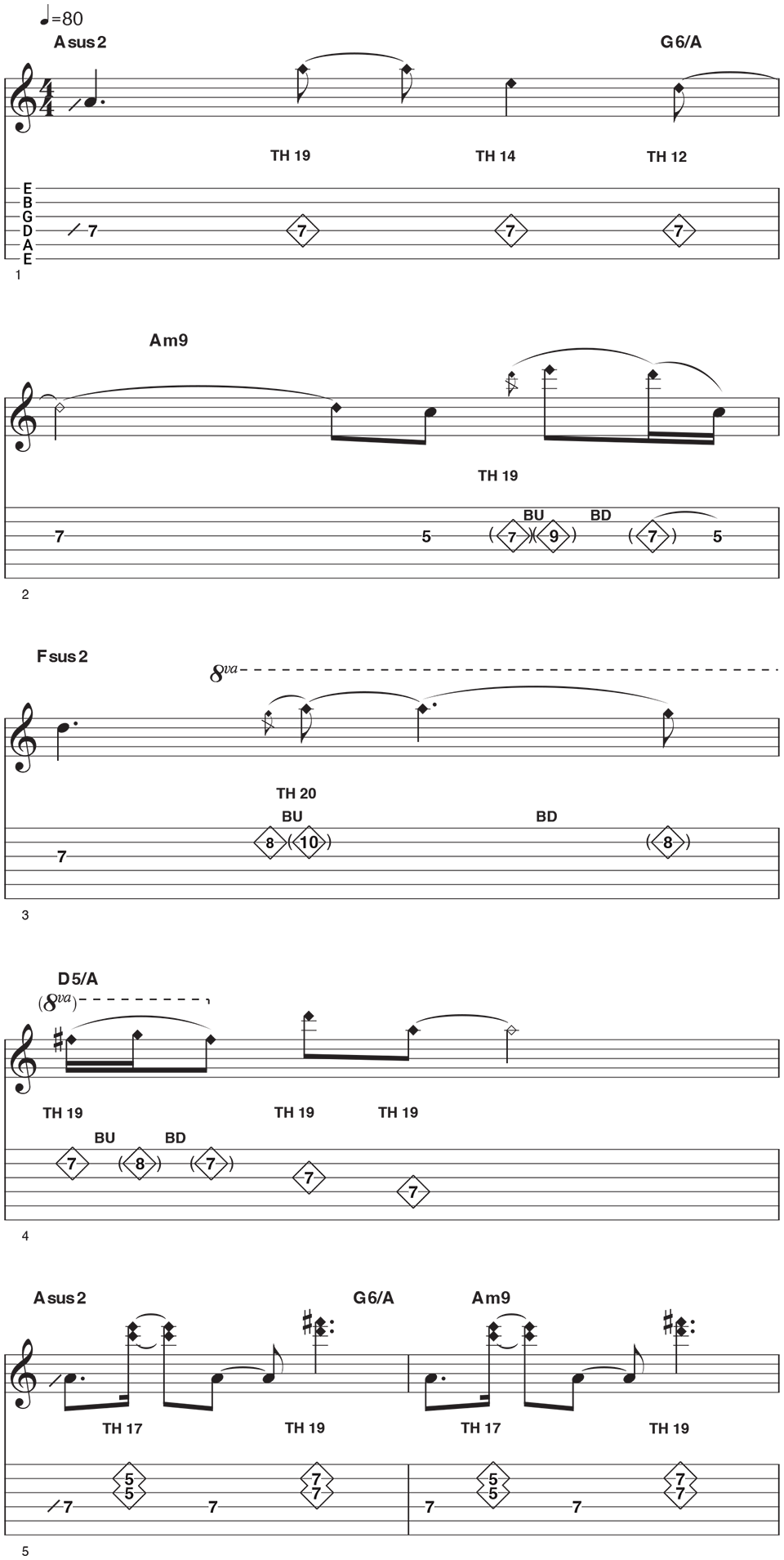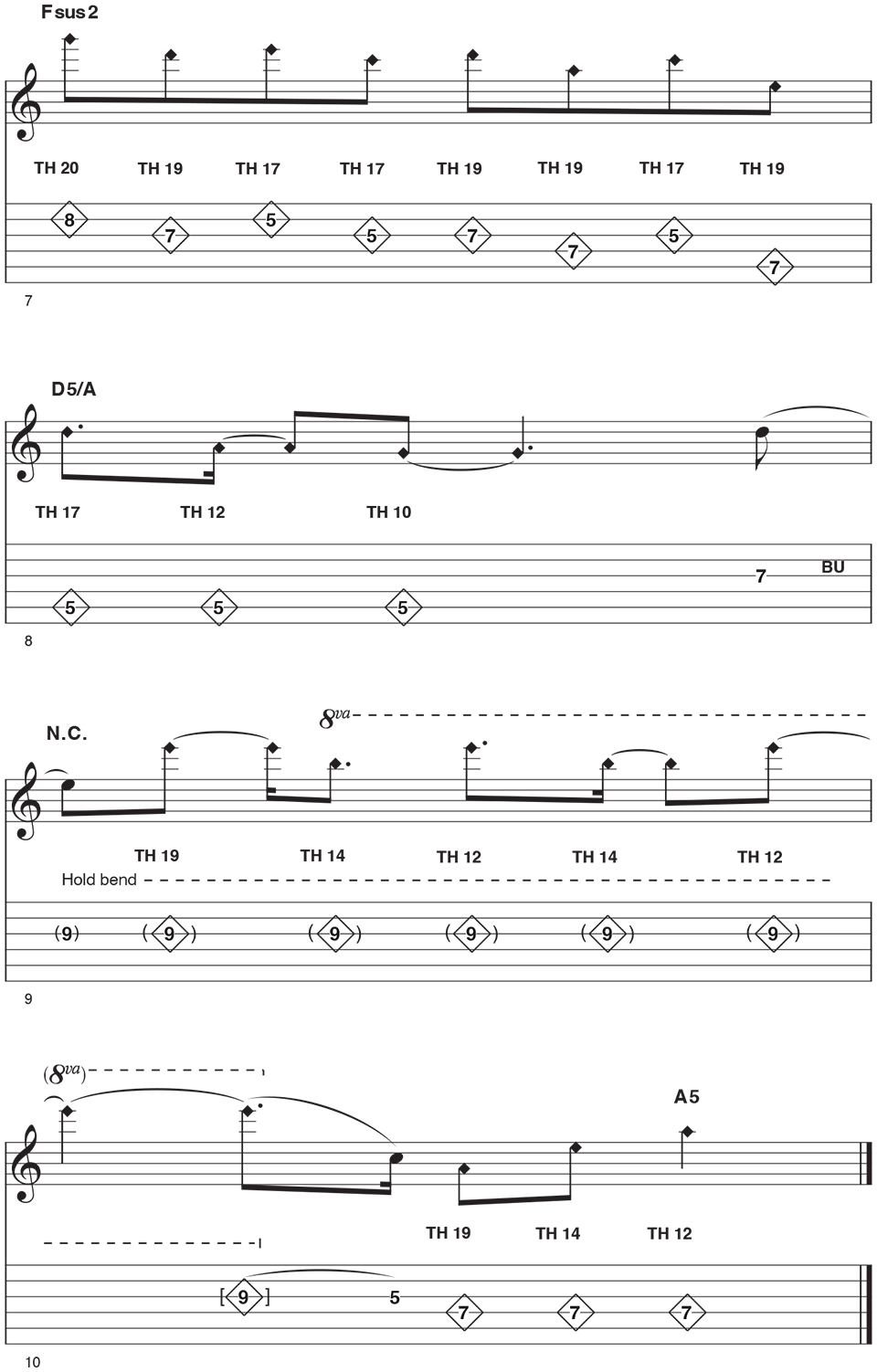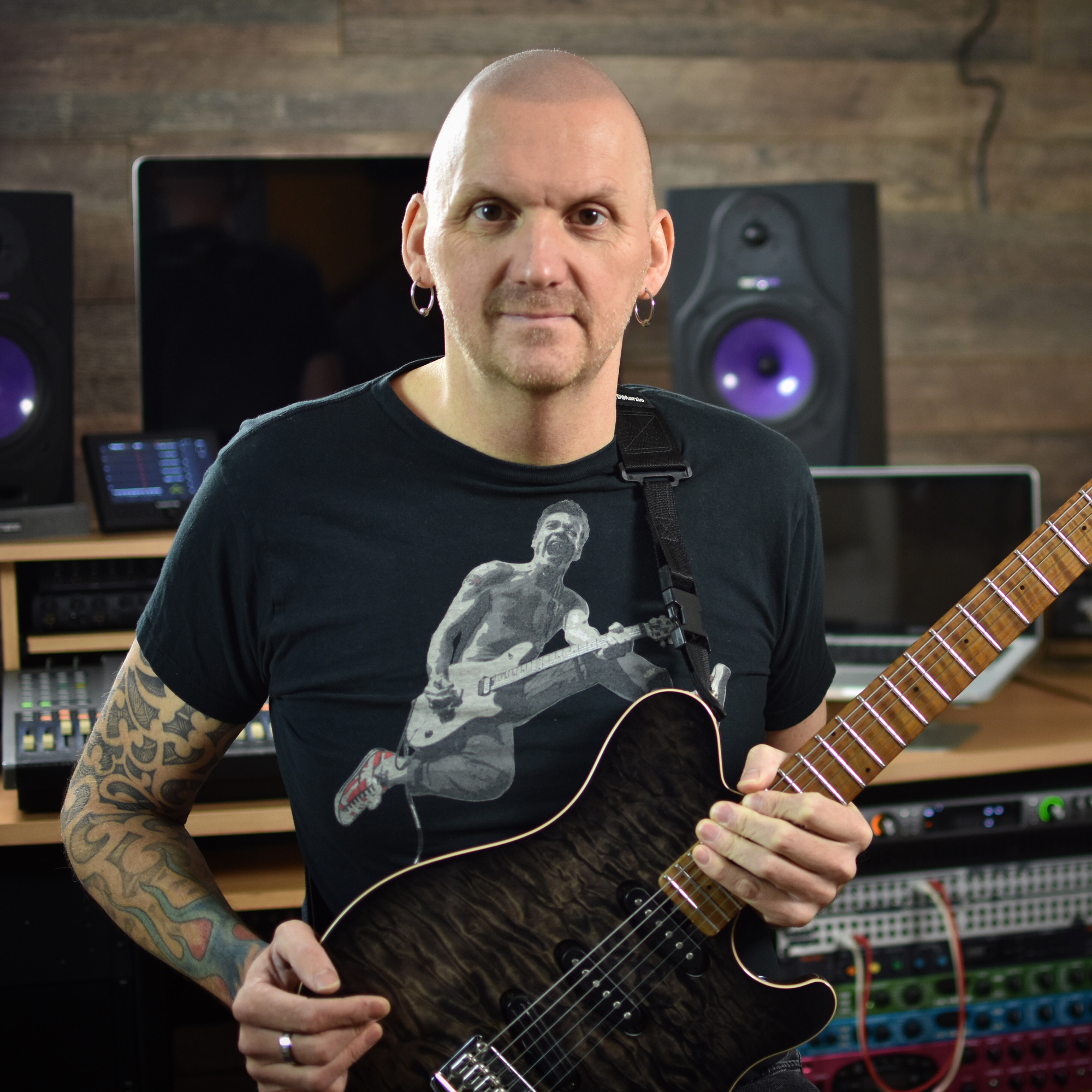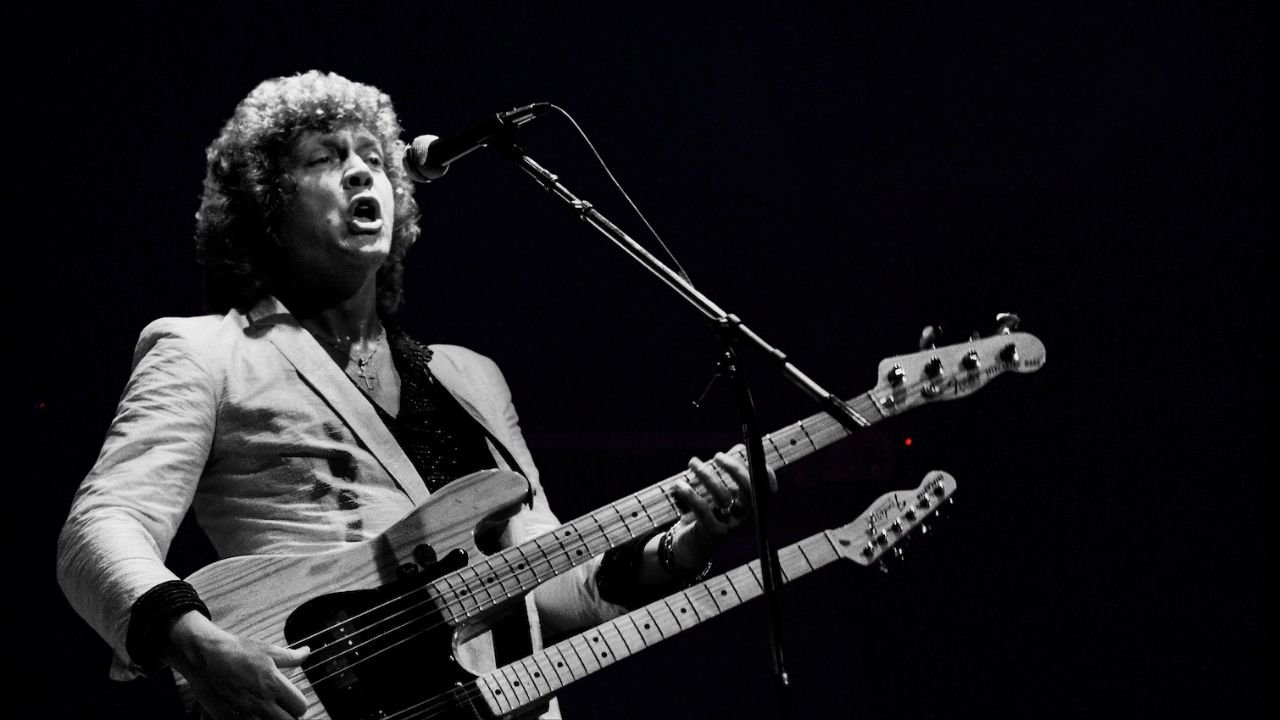When tapping's not shredding: how to play tapped harmonics like Eddie Van Halen
Tapped harmonics were among Eddie Van Halen's trademark techniques. Learn how to make your guitar scream and sing
Tapped harmonics have been used by guitarists in many styles over the decades, from acoustic through to rock. Notable fans of this technique include Nuno Bettencourt, Michael Hedges, Jeff Beck, Tuck Andress and Steve Vai.
But the guitarist most often associated with tapped harmonics is Eddie Van Halen. Eddie would include this technique in both his electric guitar solos and chord playing as well as on a nylon-string acoustic guitar.
To begin, the simplest tapped harmonic involves open strings and the 12th fret. Tap a string at the 12th fret with a picking hand finger and use a confident tap/slap motion to connect with the fretwire then come away quickly.
Eddie liked to use his picking hand's first finger while holding the pick between his thumb and second finger. However, it's become more common for guitarists to use the second finger as it doesn't alter how the pick is held between the thumb and first finger.
The resulting notes should be loud and strong, creating a bell-like sounding natural harmonic which is one octave higher than the open string.
The tapped harmonic technique is more versatile than just using open strings though. You can also fret notes with the fretting hand and then tap with the picking hand, 12 frets above.
For example, fret the 5th fret on the first string then tap a harmonic 12 frets above at the 17th fret. Again, remember to tap the actual fretwire, with a quick 'on then off' motion and do not allow the tapping finger to rest on the fretwire. This will either mute the natural harmonic or totally stop it sounding.
All the latest guitar news, interviews, lessons, reviews, deals and more, direct to your inbox!
The result is, again, a bell-like in tone with the note being an octave higher than what is being fretted. It's a wonderful and versatile effect that adds additional tone and color, be it for slow ballad playing or blazing lead playing.
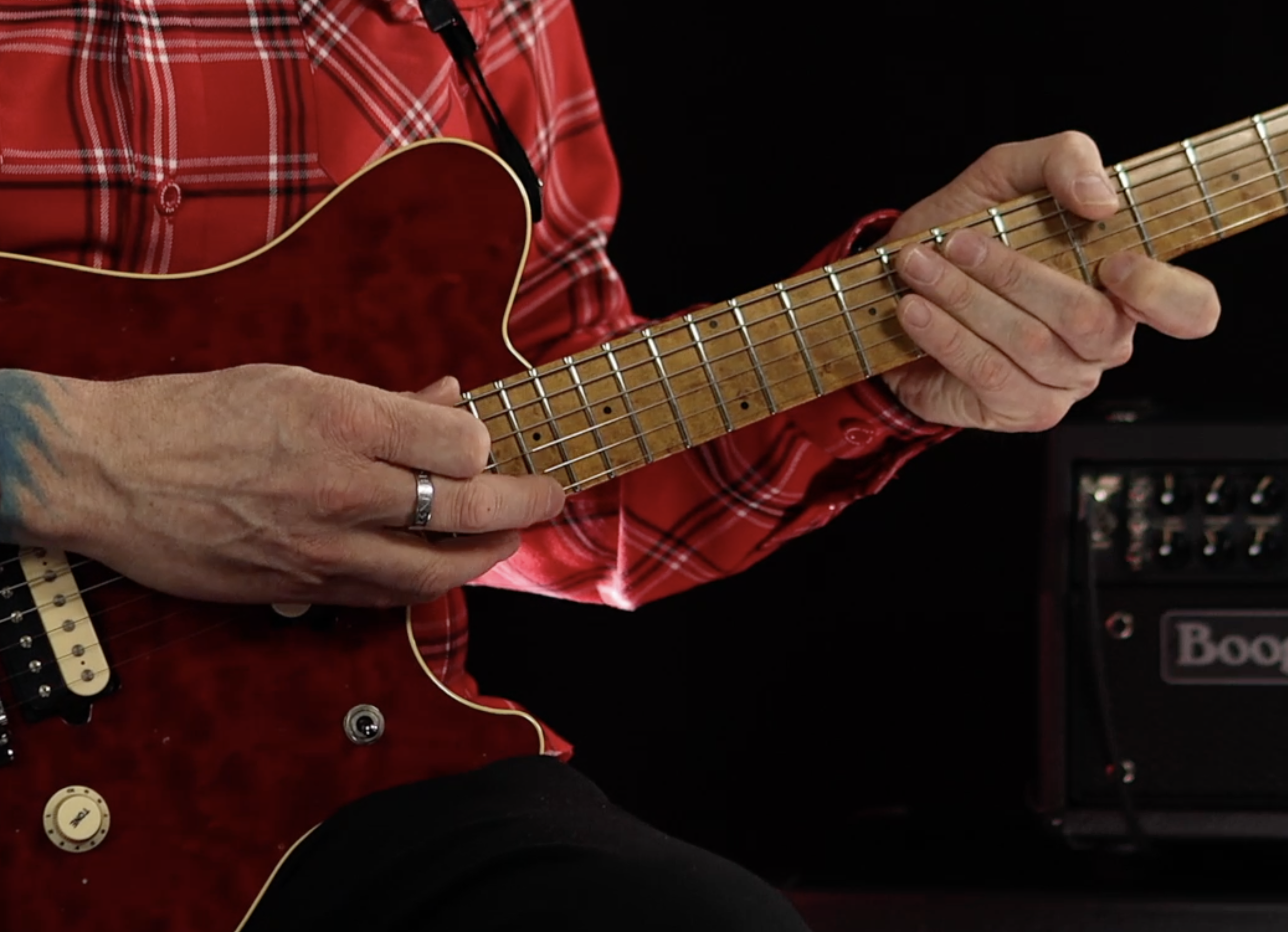
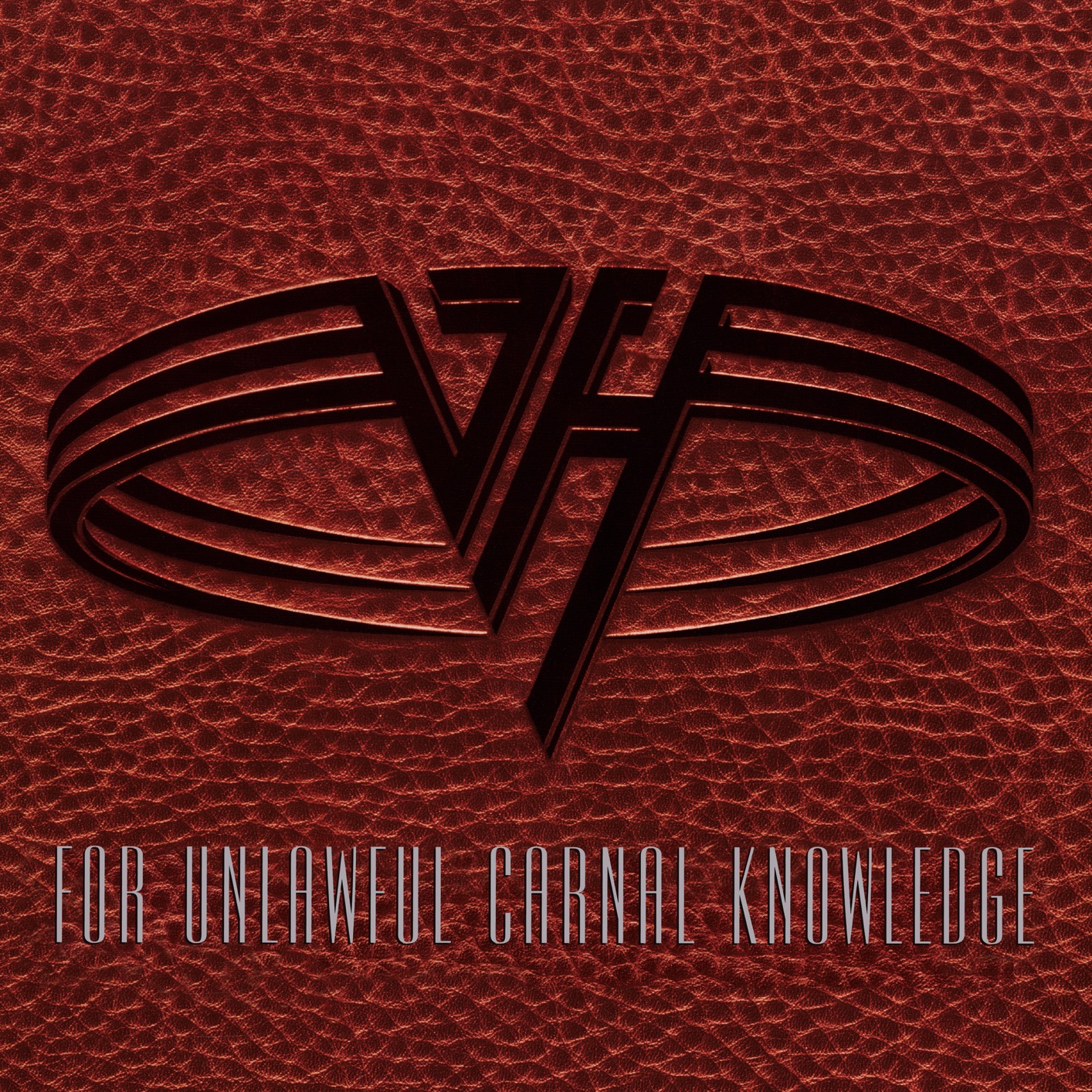
Taken from For Unlawful Carnal Knowledge, this features great examples of how Eddie Van Halen would use harmonics. The solo kicks off with Eddie tapping harmonics at various positions, while holding a string bend, effectively changing the pitch of the bent note with different harmonics.
This opens with Eddie tapping 12 frets above the open position chords, producing the iconic intro to this incredible piece of solo guitar.
3. Tuck Andress - Man In The Mirror
For the climatic outro to his solo guitar rendition of Michael Jackson's Man in the Mirror, Tuck plays big chords with slapped harmonics 12 frets above (generally speaking). Notice his picking hand first finger, stretched to cover several string slapped/tapped harmonics at once.
With an electric guitar's tonal options courtesy of the pickup selector switch, it's best to choose the brightest tone available which is the bridge pickup (either a single coil or, as used in the video, a humbucker).
This will help enhance the harmonic's bite which can be boosted even further when using an overdriven amp or a distortion pedal. This was Eddie's preferred approach as well as many others such as Steve Vai and Nuno Bettencourt.
But there's even more to be gained from this technique: you can sound other harmonics by tapping at different frets, producing new notes off of the same fretted note.
So while the '12 frets above' approach is the most common (and often the easiest to do), you can also tap 5 frets, 7 frets and 9 frets away from a fretted note. Some will be tougher to sound (eg 5 frets away), so you'll need to fine tune the strength and exact placement of your tapping.
You might also like to (perhaps) add a little more distortion but be careful of unwanted string noise: use whatever fingers and hand placements you can to mute the other strings.
And if all this wasn't enough already, tapped harmonics aren't just about single notes either – there are chords, too!
For single-string tapped harmonics, you will be using a picking hand fingertip but to sound double-stop or chord based harmonics, slap the strings with your fingerpad. To get the best results with these chordal slapped harmonics, all fretted notes should ideally be at the same fret as a finger can stretch only so far.
However, plenty of players play big chords across several frets and then slap them with stretched out finger, getting most of the harmonics most of the time. It's really a case of experimenting with finger angle and where finger/string contact is.
Now onto the examples: you have six to work with going from open strings to a final lead and chord tapped harmonics stunner. Enjoy!
Example 1. Open string tapped harmonics
This introduces the technique of tapped harmonics. For this example, you will tap at the 12th fret producing tapped harmonics from the open strings. Be sure your tapping finger makes contact with the fretwire at the 12th fret. Spend some time experimenting with the position of your tapping finger so the harmonics really pop out.
Example 2. Tapped harmonics with fretted notes
Here, you will tap harmonics while fretting notes on the first string, tapping 12 frets higher than the position of the fretted notes.
To begin, fret the A note at the 5th fret, then use a picking hand finger to tap the harmonic at the 17th fret. Next is a C note at the 8th fret which is tapped at the 20th fret. This example then builds, making use of different rhythmic subdivisions.
Example 3. A minor pentatonic with tapped harmonics
This illustrates how you can play an A minor pentatonic scale by tapping harmonics 12 frets higher. This will keep your hands busy, as you will be changing positions with your tapping hand at the same time as you ascend and descend through a scale. Pay attention to muting unwanted string noise when crossing the strings.
Example 4. One fretted note, three tapped harmonic notes
This is typical Eddie Van Halen, changing the pitch of a static note by tapping harmonics at different positions along the string. Fret the C note on the 5th fret, third string and then tap harmonics at the 17th, 12th and 9th frets.
The closer you tap to the fretted note, the harder it will be to sound a clear harmonic so be patient and spend time getting a quick and precise strike on the fretwire.
Example 5. Tapping chord harmonics
Here is an introduction to tapping harmonics in chords, with an example reminiscent of how Steve Vai and Jason Becker utilize tapped harmonics.
You will start by arpeggiating each chord, before striking a cluster of strings with the flat fingerpad of your tapping finger to sound harmonics on more than one string. This technique adds a bell-like quality to chords.
Example 6. A whole lotta tapped harmonics!
This combines the previous approaches to tapped harmonics for a short rock solo. Bars 1-4 kick things off with licks based around the A minor pentatonic, embellished with tapped harmonics.
The opening phrase sees you tapping at different points of the string against a static fretted note, so take care the closer your tapping hand gets to the fretted note. Also take care with the bending licks, where you tap the harmonic prior to bending.
Bars 5-8 kick off with bluesy double-stops, embellished with tapped harmonics. This section concludes with a descending sequence, leading to another phrase where you tap harmonics in different positions against a static note.
Bars 9-10 include a few challenging phrasing, where you hold a bend while tapping at different points of the string. This is a classic EVH technique and a challenge to achieve so be patient. Happy harmonic tapping!
Jamie Humphries is an English guitarist based in Sweden. He has toured and performed with artists such as Brian May, Queen, Jeff Beck and Henry Rollins, as well as performing across Europe for We Will Rock You and in America with the Australian Pink Floyd Show. He was a longtime contributor to Guitar Techniques magazine and contributes lessons for Gibson. He runs his own studio in Stockholm where he produces Youtube content for Six String Alliance and Produce Like A Pro. He is a Music Man and Mesa/Boogie endorsee.
- Jason SidwellTuition Editor – GuitarWorld.com, GuitarPlayer and MusicRadar.com
You must confirm your public display name before commenting
Please logout and then login again, you will then be prompted to enter your display name.

